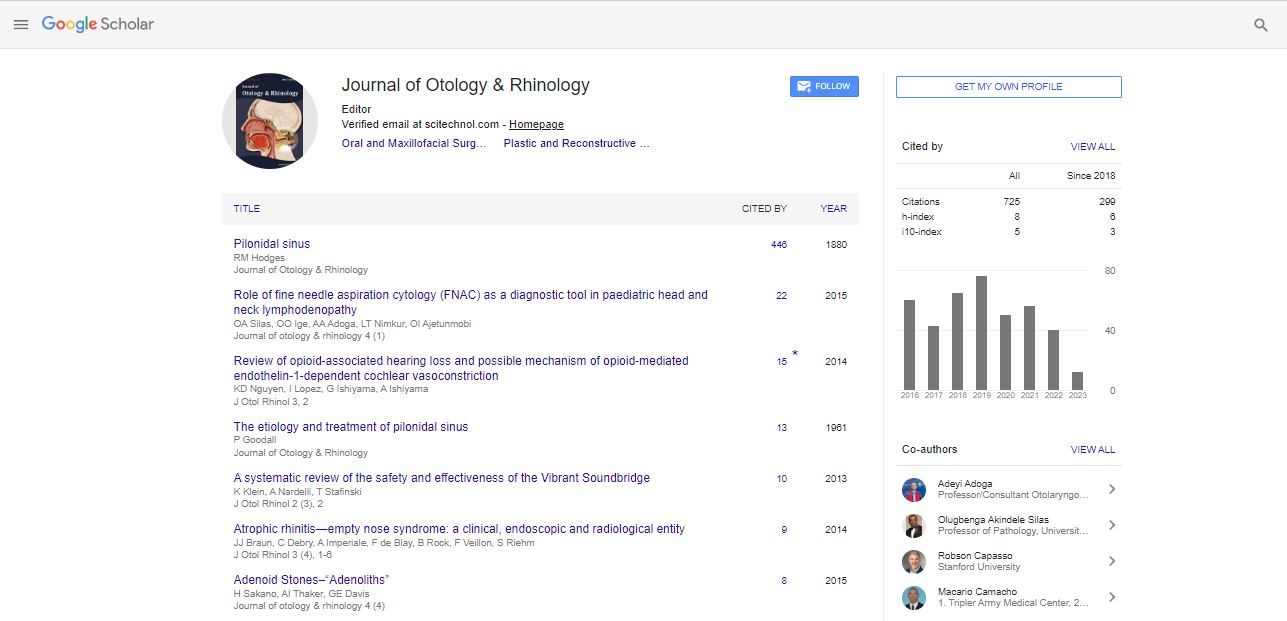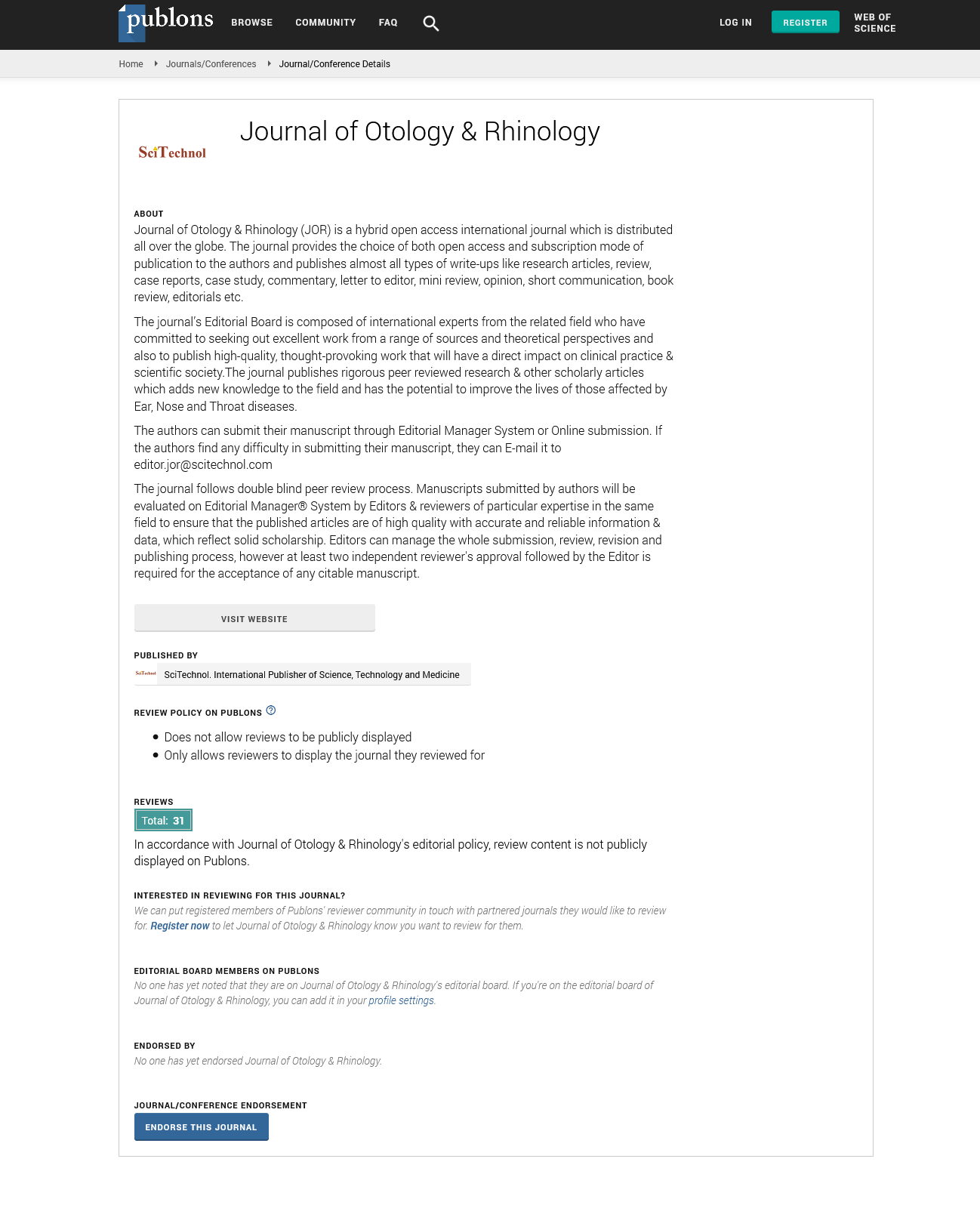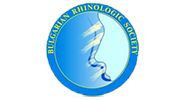Diagnosis and treatment of temporomandibular disorders and sleep apnea
Naser Azmi Khayat
Arab American University, Palestine
: J Otol Rhinol
Abstract
Temporomandibular disorder (TMDs) is a term for pain and dysfunction involving the masticatory muscles and the temporomandibular joints (TMJs) and is the most common orofacial pain condition. Prominent features are regional pain in the face and preauricular area, limitations in jaw movements and noise from the TMJs during jaw movements. TMD affects up to 15% of adults, with a peak incidence at 20 to 40 years of age. Chronic pain is the overwhelming reason for patients with TMD treatment. TMD can be associated with impaired general health, depression and other psychological disabilities and affect quality of life and well-being of the patient. The recently published diagnostic criteria for TMD (DC/TMD) have been found to be reliable and valid. These criteria include the most common types of TMDs including pain-related disorders, such as myofacial pain, headache attributed to TMD, arthralgia, as well as disorders associated with the TMJ, primarily disc displacements and degenerative disease. Co-morbid pain conditions such as headache, back and neck pain are common among TMD patients. Of this headache is most commonly reported and a significant overlap between headache and TMD-pain has been reported. Both conditions involve trigeminal neural processes, are characterized by pain in the head and/or face and pericranial tenderness. The primary utility of the DC/TMD diagnosis headache attributed to TMD is that it points to TMD treatment as a therapeutic approach for headache. Most patients with TMD improve with a combination of noninvasive therapies, including behavior therapy, pharmacotherapy, physical therapy and occlusal appliances. Obstructive sleep apnea (OSA) is a disorder in which recurrent closure of the upper airways occur during sleep. It is characterized by repetitive episodes of complete (apnea) or partial (hypopnea) upper airway obstruction occurring during sleep. Whereas apnea is complete cessation of airflow, hypopnea is characterized by a 70% reduction of airflow for ≥10 seconds or any reduction in airflow that is associated with either an arousal from sleep or a ≥3% arterial oxygen desaturation. These frequent arousals are the primary cause of excessive daytime somnolence, are associated with impaired daytime cognitive function and are recognized as a cofactor in the etiology of road traffic accidents. Sleep apnea may also be associated with increased cardiovascular and increased cerebrovascular morbidity and mortality. An estimated 82% of men and 92% of women with moderate to severe sleep apnea remain undiagnosed. OSA treatment is chosen is based on patients clinical features. Its resolution may occur by losing weight, if the patient is obese, avoiding sleep in the supine position, if the OSA is position dependent, avoiding alcohol consumption during the evening and treating hypothyroidism if present. When these approaches are proved to be unsuccessful, other treatment should be chosen: nasal continuous positive pressure (CPAP), surgical treatment or the application of oral appliances. Actually the role of a dentist is multi-level both in clinical evaluation and in treatment of OSA.
Biography
Naser Azmi Khayat has been working as a lecturer in the Arab American university, Palestine. He did his B.Sc. in Dentistry from Baghdad University in Iraq in 1998 and M.Sc. in Orthodontics from AL-Mosul University in Iraq in 2000. He is also the Chairman of “Palestinian Academy for TMD & Dental Sleep Medicine” from 2018 and since 2014 until now he has been doing PhD researches in the relation between orthodontic problems and temporomandibular disorders at Tel Aviv University.
E-mail: khayatnaser@yahoo.com
 Spanish
Spanish  Chinese
Chinese  Russian
Russian  German
German  French
French  Japanese
Japanese  Portuguese
Portuguese  Hindi
Hindi 


